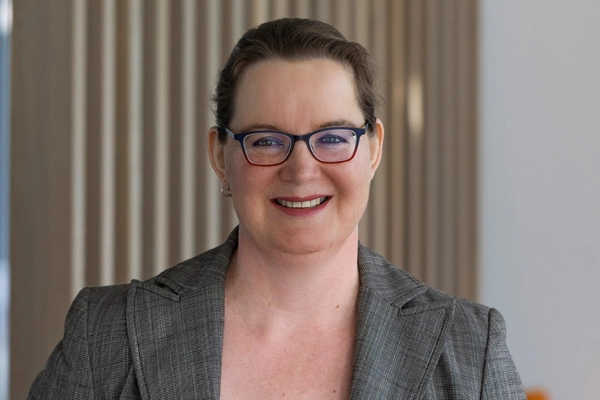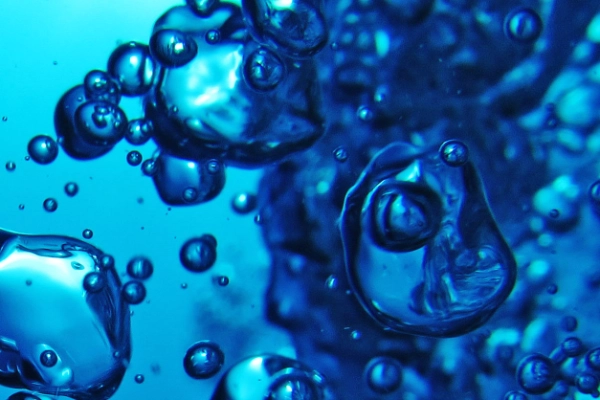Heraeus Precious Metals, in collaboration with Sibanye-Stillwater, unveiled today at the P2X conference in Frankfurt, its latest solution, addressing a key challenge in sustainable hydrogen production. Heraeus introduced a ruthenium-based catalyst for PEM water electrolysis, combining the high activity of ruthenium-based catalysts with a so far not achieved stability during hydrogen production.
Hydrogen has emerged as a fundamental element in the energy transition, with, according to the Hydrogen Council, announced capacities of 175 gigawatts (GW) expected by 2030. Notably, 40% of this future capacity is expected to be produced using PEM electrolysis, a technology dependent on iridium, an element in extremely limited supply. With only about nine metric tons of iridium mined annually and widespread utilization in various industries, supply bottlenecks are imminent - unless solutions are implemented that reduce the amount of iridium used in the PEM application.
Currently, approximately 400 kg of iridium is required to build one GW of capacity. A reduction to less than 100 kg per GW is necessary to avoid supply bottlenecks. Heraeus' latest innovation in collaboration with Sibanye-Stillwater presents a solution: a ruthenium-based catalyst that can enable an 85% saving on iridium compared to an iridium oxide catalyst, alleviating the potential supply concerns. Primary production of ruthenium is 3.5 times that of iridium.
Alongside iridium, ruthenium also catalyzes the Oxygen Evolution Reaction (OER), which is the critical stage in PEM electrolysis. Ruthenium possesses superior catalytic activity to iridium but lacks stability in the challenging conditions of a PEM electrolyzer stack. The Heraeus concept solves this problem by combining both ruthenium and iridium oxide in a novel manner, enhancing stability while maintaining the increased catalytic activity provided by ruthenium.

This ruthenium-iridium oxide material class delivers an unprecedented activity boost. The catalyst can achieve up to 50 times higher mass activity than iridium oxide, and unlike ruthenium oxide alone, it remains stable in operational conditions. Accelerated degradation tests confirmed its stability after 30,000 cycles, presenting activity loss significantly lower than for ruthenium oxide and on par with iridium oxide. These findings were verified by Mattiq, a start-up based in Chicago, Il (US), which combined industry expertise in chemistry and materials science and performed high throughput screening experiments for the development project.
By including ruthenium, Heraeus not only helps mitigate potential supply bottlenecks but also brings significant commercial benefits. By implementing this breakthrough, a significant 90% reduction in capital expenditure on material costs can be achieved, ensuring hydrogen production becomes more economically feasible and efficient.
Dr. Philipp Walter, EVP New Business Development at Heraeus Precious Metals stated: “The dramatic reduction in capital expenditure needed per GW enabled by our new ruthenium-based catalyst not only addresses the iridium supply problem but also makes economic sense. It is solutions like these that will champion the necessary scale-up of the hydrogen industry, bringing us closer to achieving our global green energy goals.”
Neal Froneman, Chief Executive Officer of Sibanye-Stillwater commented: “As the largest producer of primary iridium globally, we firmly believe that sustainable demand of these metals, with supply in mind, is beneficial for the entire industry. The commendable progress achieved by Heraeus in their work to date is encouraging, and we highly value our partnership in this endeavor.”

In its product portfolio for the hydrogen economy, Heraeus already offers another iridium-saving catalyst based on iridium oxide on a carrier.
“We recognize that different operational settings may require different solutions; one catalyst may perform better under unique conditions, while another catalyst could be more suitable under other operation boundaries,” says Christian Gebauer, Head of R&D Hydrogen Systems at Heraeus Precious Metals. “The beauty of these two catalysts is their potential to further reduce the iridium content in the application. Our long-term outlook is to develop solutions that ultimately reduce iridium content to a mere 15 kg per GW. These advancements will open the doors for hyperscaling beyond 2030 and represent a significant stride in enabling a sustainable hydrogen industry and strengthening the future of green energy.”
About Heraeus
The Heraeus Group is a broadly diversified and globally leading family-owned technology company, headquartered in Hanau, Germany. The company’s roots go back to a family pharmacy started in 1660. Today, Heraeus bundles diverse activities in the Business Platforms Metals and Recycling, Healthcare, Semiconductor and Electronics as well as Industrials. Customers benefit from innovative technologies and solutions based on broad materials expertise and technological leadership.
In the 2022 financial year, the group generated revenues of €29.1 billion (US$30.6 billion*) with approximately 17,200 employees in 40 countries. Heraeus is one of the top 10 family-owned companies in Germany and holds a leading position in its global markets.
About Heraeus Precious Metals
Heraeus Precious Metals is globally leading in the precious metals industry. The company is part of the Heraeus Group and covers the value chain from trading to precious metals products to recycling. It has extensive expertise in all platinum group metals as well as gold and silver.
With about 3,000 employees at 15 sites worldwide, Heraeus Precious Metals offers a broad portfolio of products that are essential for many industries such as the automotive, chemicals, semiconductor, pharmaceutical, hydrogen and jewelry industry.
By 2025 Heraeus Precious Metals will be the first company in the industry that operates carbon neutral.
About Sibanye-Stillwater
Sibanye-Stillwater is a multinational mining and metals processing group with a diverse portfolio of operations, projects and investments across five continents. The Group is also one of the foremost global recyclers of PGM autocatalysts and has interests in leading mine tailings retreatment operations.
Sibanye-Stillwater has established itself as one of the world’s largest primary producers of platinum, palladium, and rhodium and is a top tier gold producer. It also produces and refines iridium and ruthenium, nickel, chrome, copper and cobalt. The Group has recently begun to build and diversify its asset portfolio into battery metals mining and processing and is increasing its presence in the circular economy by growing and diversifying its recycling and tailings reprocessing operations globally. For more information refer to www.sibanyestillwater.com.
About Mattiq
Mattiq is building the world’s most technologically advanced clean chemistry company. Reinventing electrochemical process development, Mattiq leverages materials science and artificial intelligence to accelerate the design and deployment of commercially viable, sustainable processes to produce the chemicals, fuels, and plastics that power our world. We deliver chemical and energy companies safe, scalable, and cost-effective solutions that support a cleaner planet and supply chain resilience. Learn more at www.mattiq.com.
FORWARD LOOKING STATEMENTS (SIBANYE-STILLWATER)
This announcement contains forward-looking statements within the meaning of the “safe harbour” provisions of the United States Private Securities Litigation Reform Act of 1995. All statements other than statements of historical fact included in this announcement may be forward-looking statements. Forward-looking statements may be identified by the use of words such as “will”, “would”, “expect”, “forecast”, “potential”, “may”, “could”, “believe”, “aim”, “anticipate”, “target”, “estimate” and words of similar meaning.
These forward-looking statements, including, among others, those relating to Sibanye-Stillwater Limited’s (“Sibanye-Stillwater”) future business prospects, financial positions, production and operational guidance, climate and ESG-related statements, targets and metrics, business strategies, plans and objectives of management for future operations and ability to complete or successfully integrate ongoing and future acquisitions, are necessarily estimates reflecting the best judgement of Sibanye-Stillwater’s senior management. Readers are cautioned not to place undue reliance on such statements. Forward-looking statements involve a number of known and unknown risks, uncertainties and other factors, many of which are difficult to predict and generally beyond the control of Sibanye-Stillwater that could cause its actual results and outcomes to be materially different from historical results or from any future results expressed or implied by such forward-looking statements. As a consequence, these forward-looking statements should be considered in light of various important factors, including those set forth in Sibanye-Stillwater’s 2022 Integrated Report and annual report on Form 20-F filed with the United States Securities and Exchange Commission on 24 April 2023 (SEC File no. 333-234096). These forward-looking statements speak only as of the date of this announcement. Sibanye-Stillwater expressly disclaims any obligation or undertaking to update or revise any forward- looking statement (except to the extent legally required).

